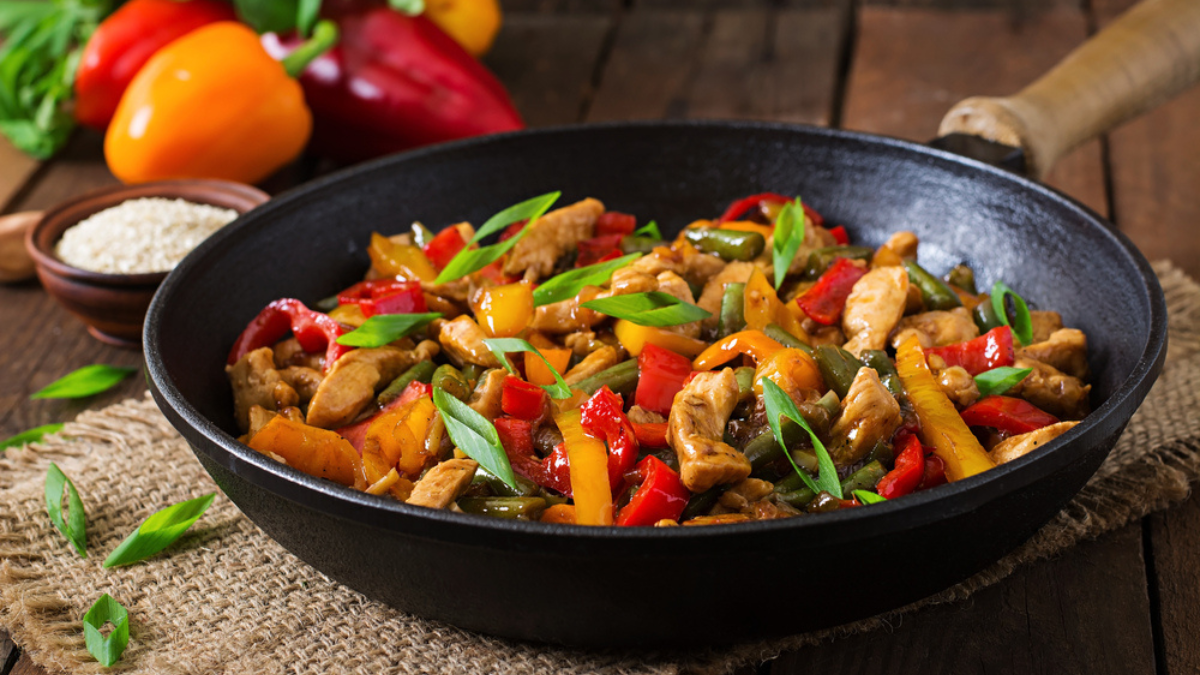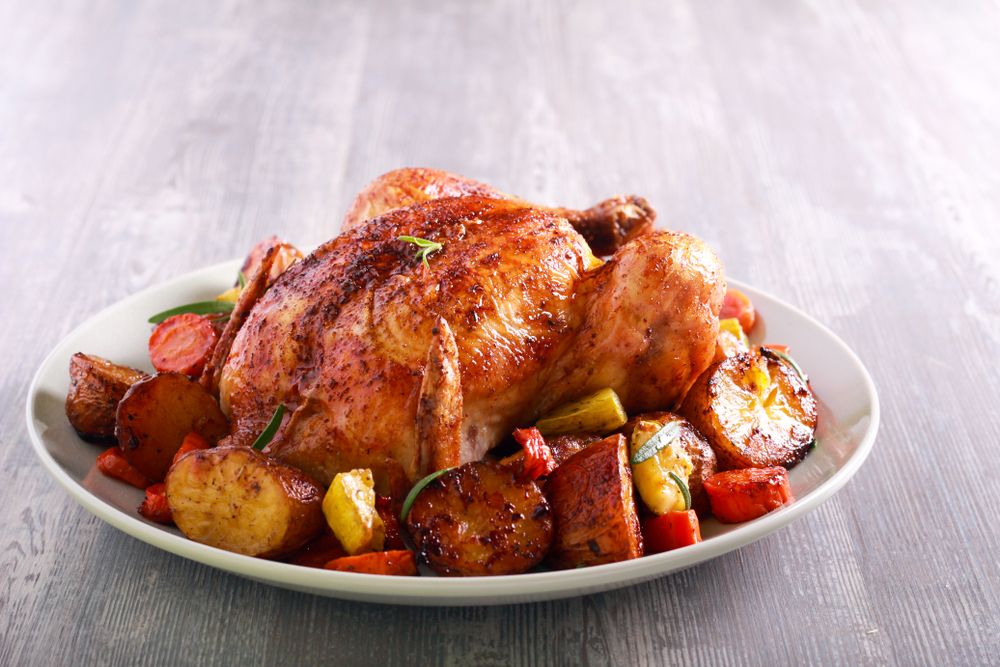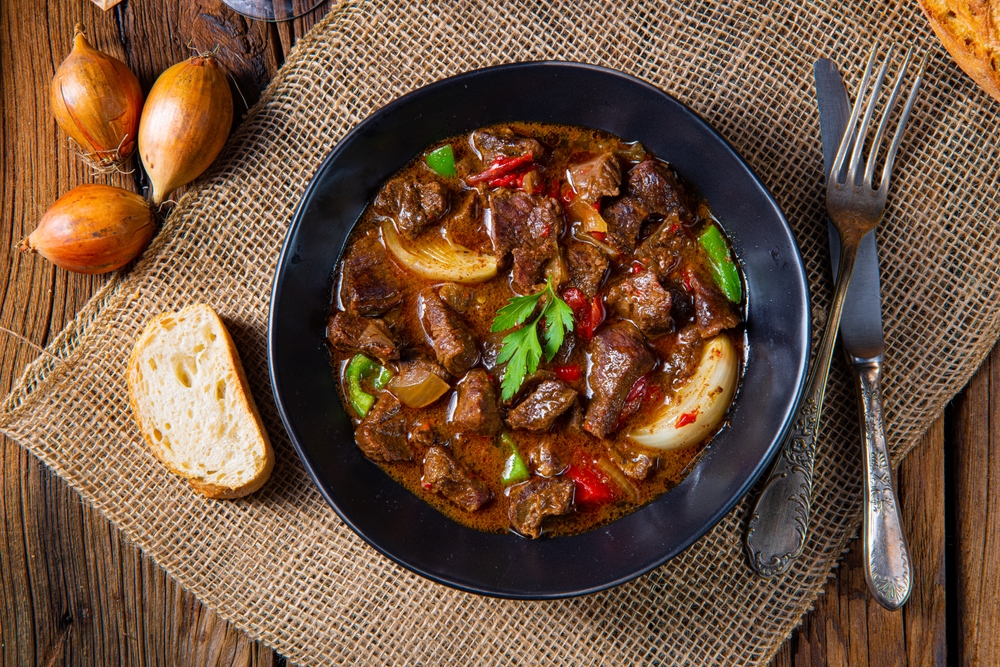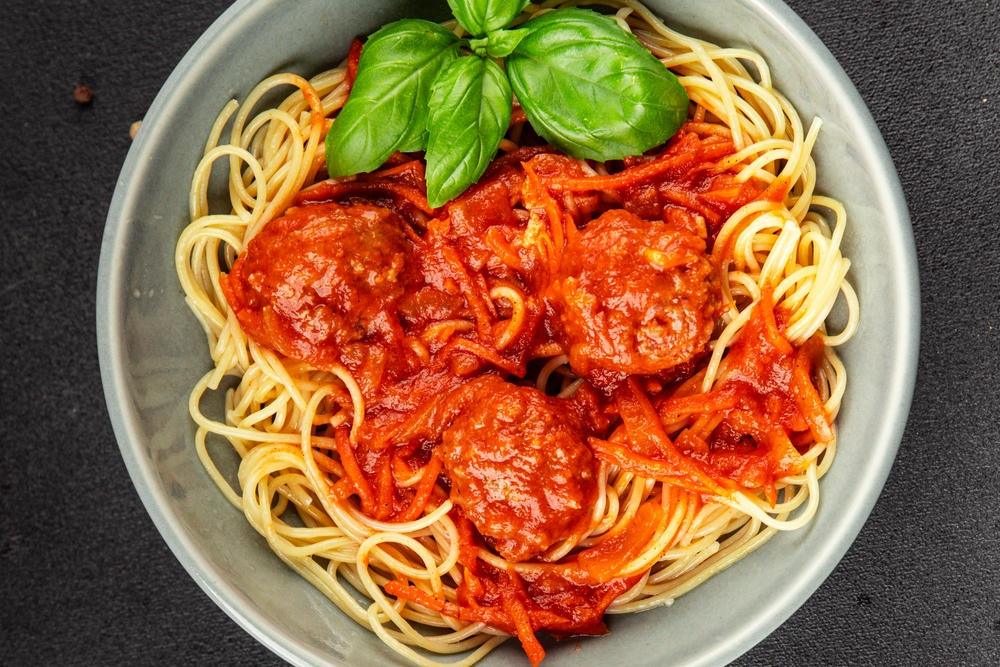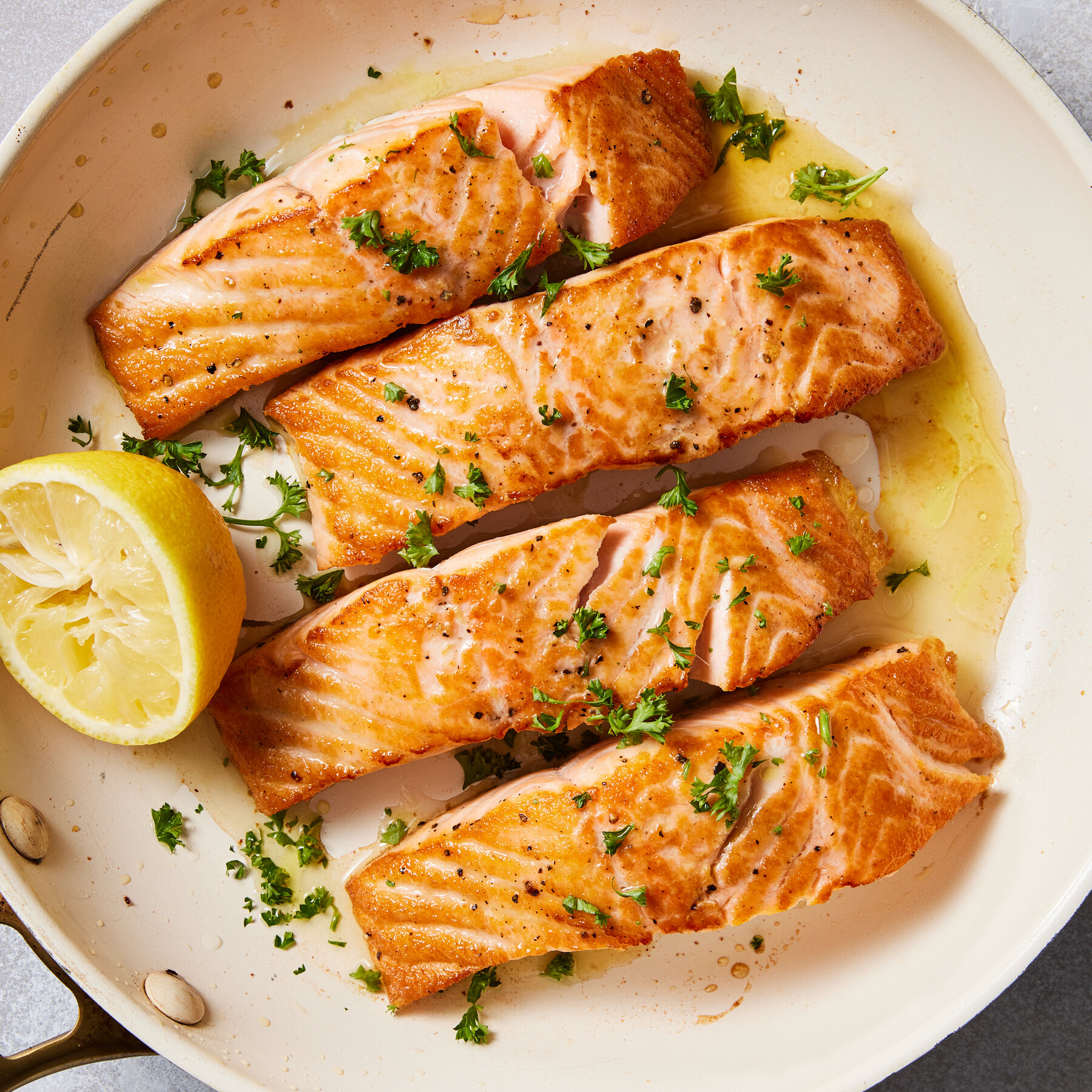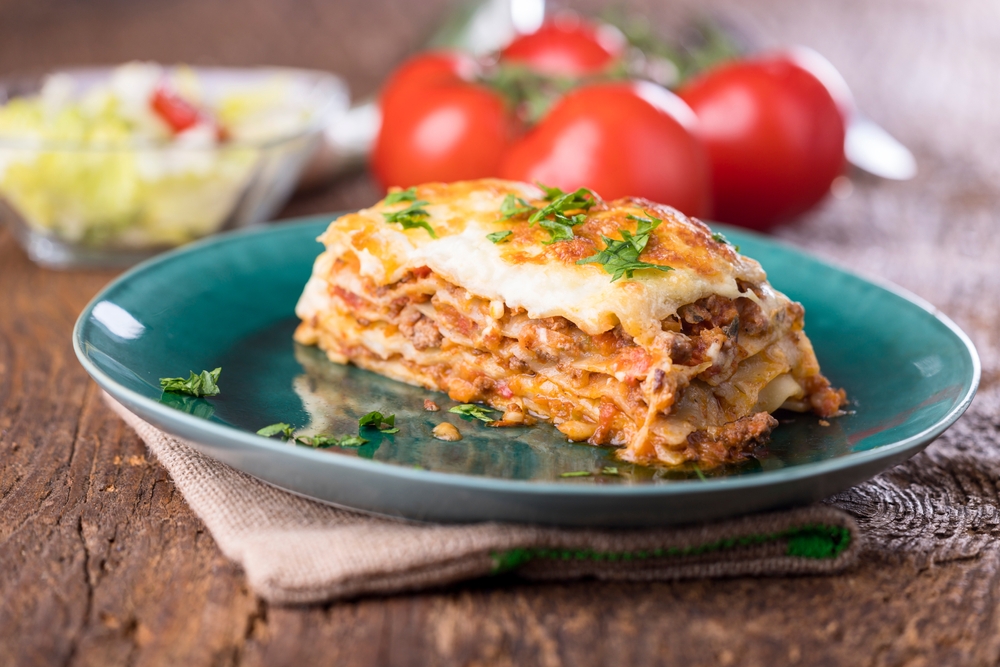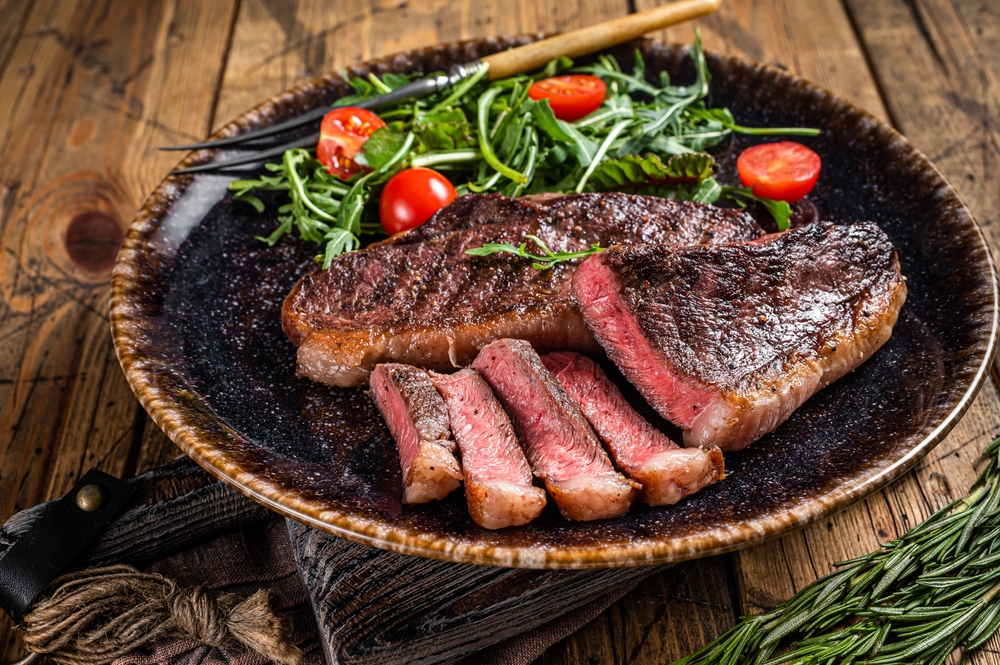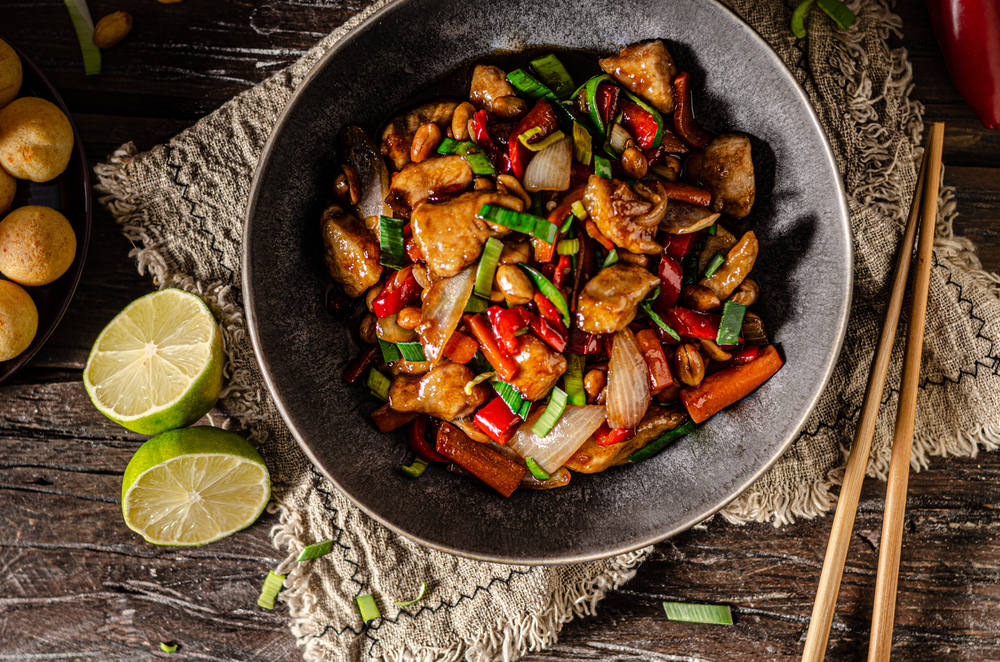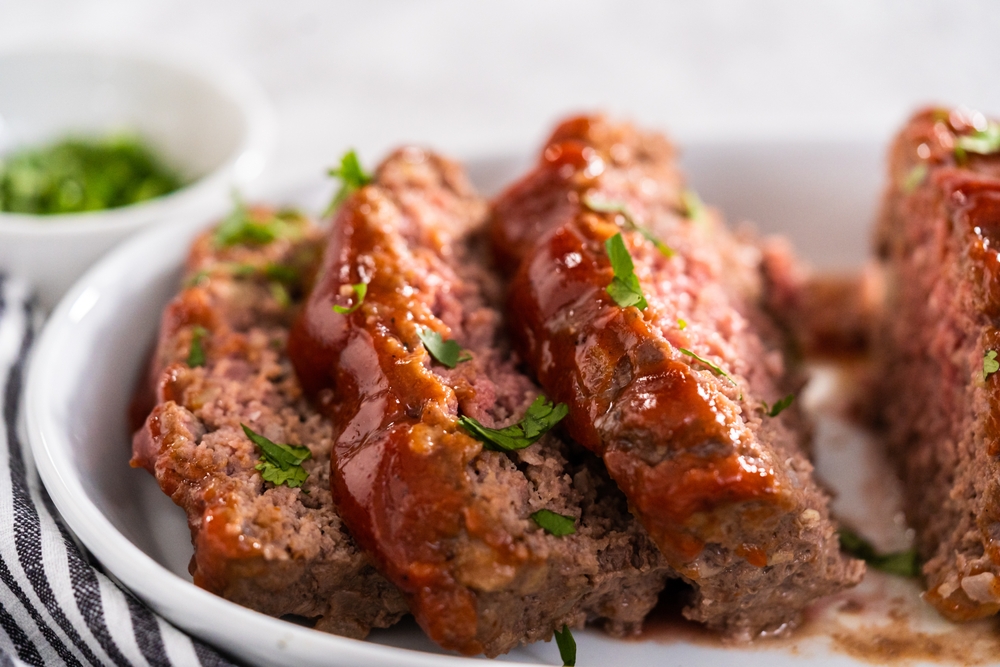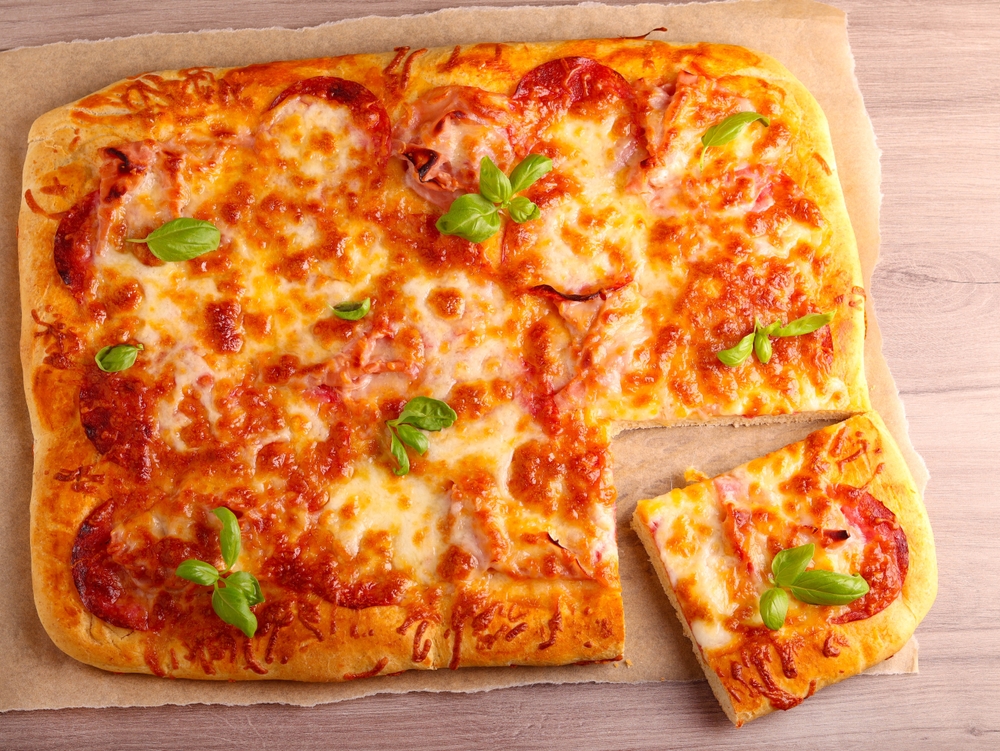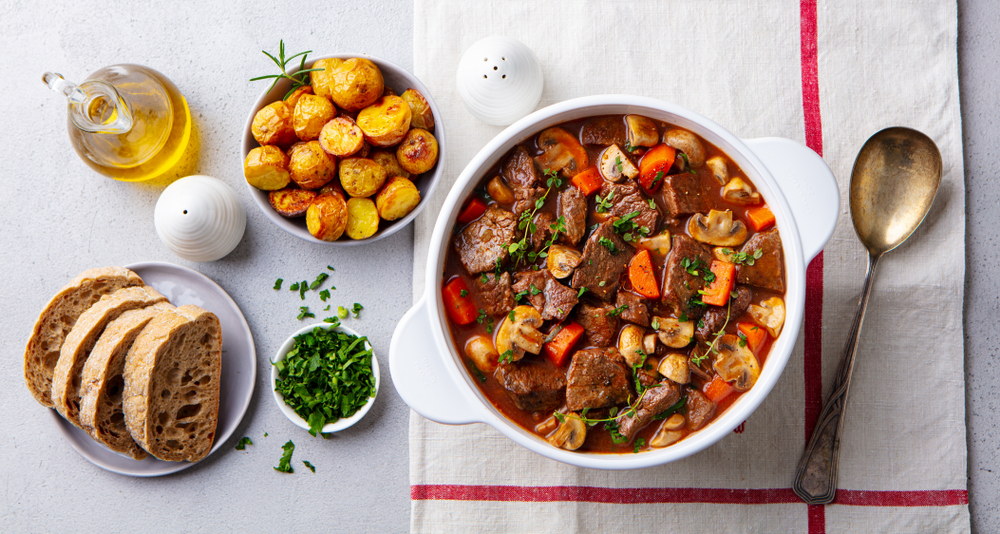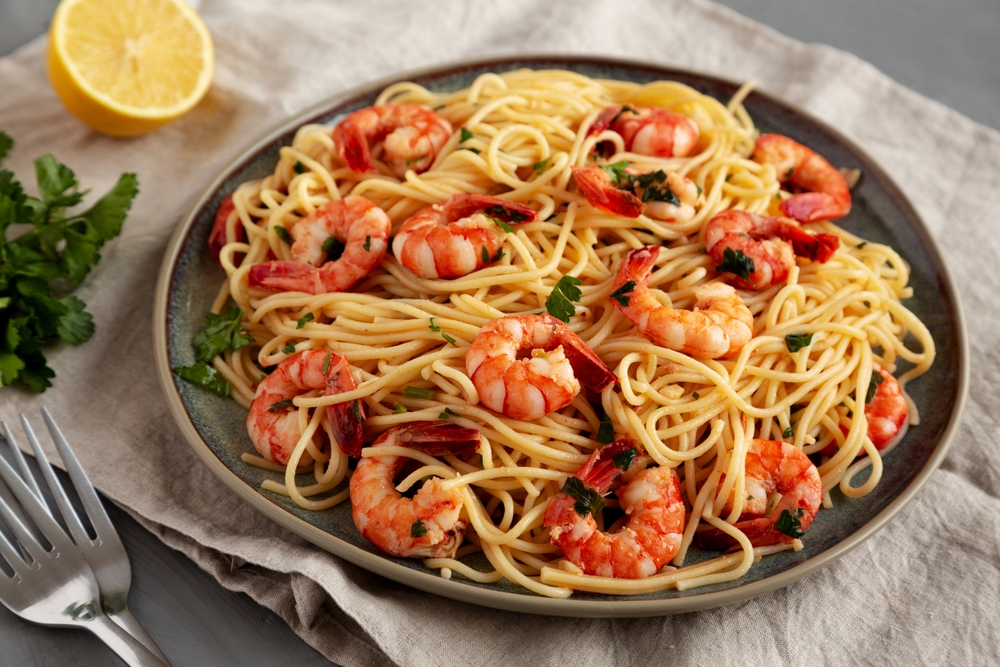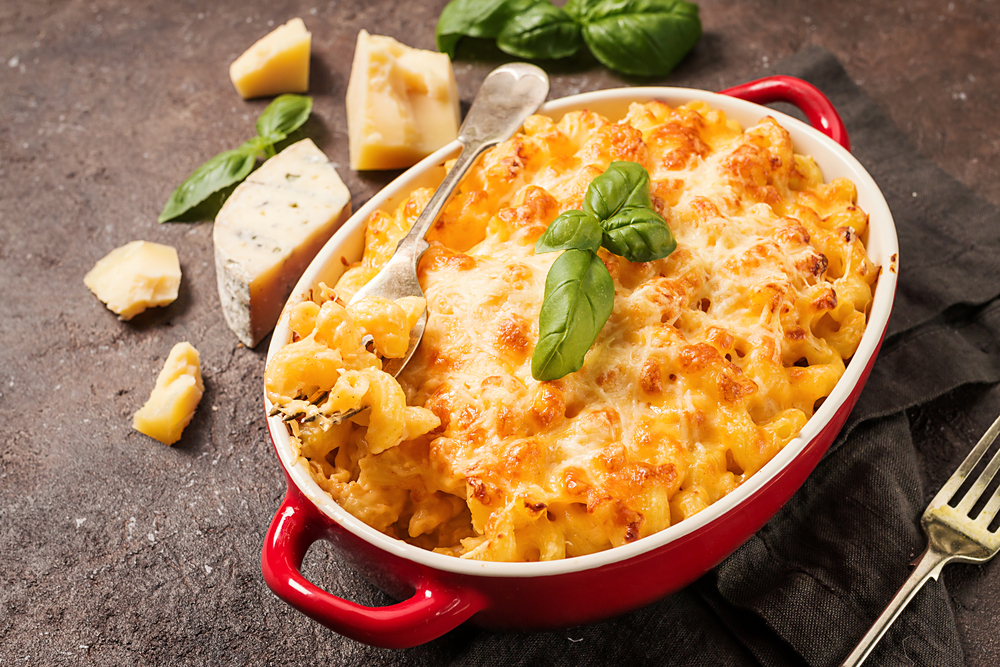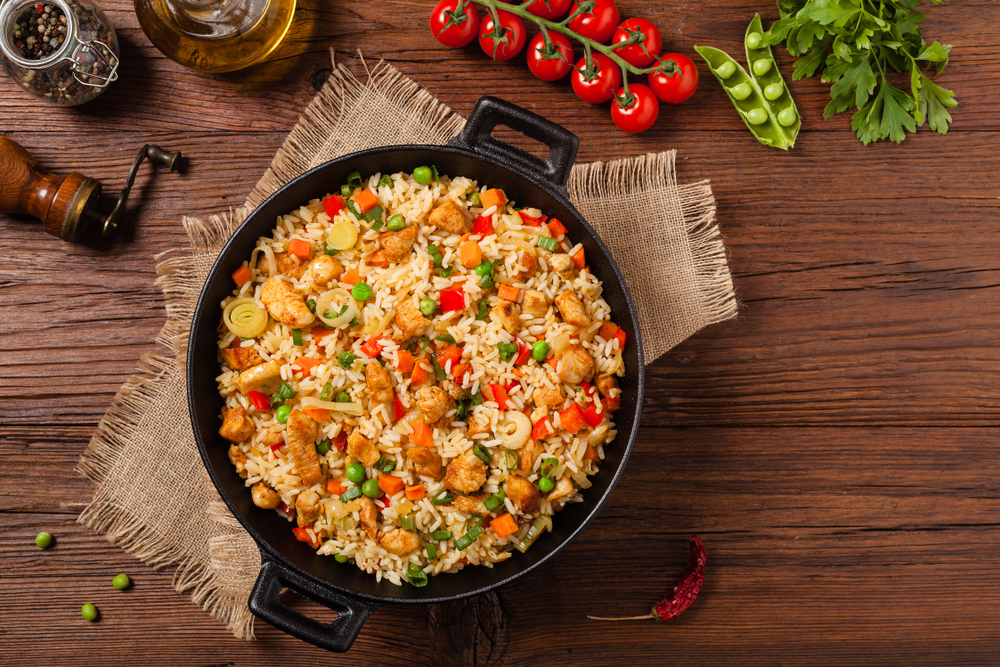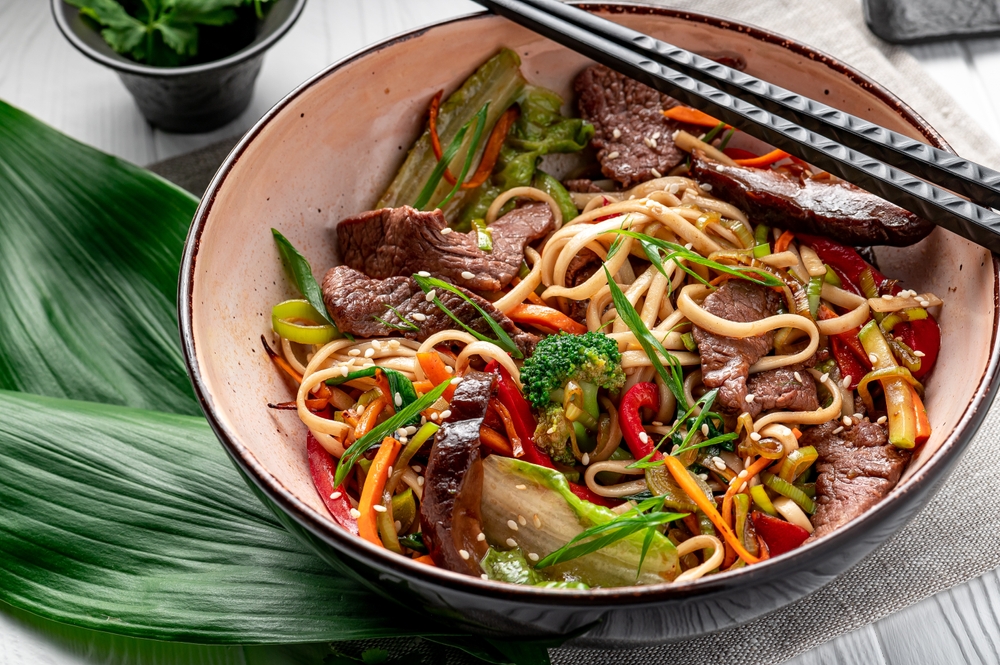Learning to cook well is like having a superpower in your own kitchen. Mastering a few classic main dishes gives you the confidence to feed your family and friends delicious meals any day of the week. These timeless recipes form the backbone of home cooking across many cultures, using simple ingredients and techniques that build essential cooking skills.
1. Roast Chicken with Vegetables
Golden and crispy on the outside, juicy and tender on the inside – that’s the magic of a perfectly roasted chicken. The wonderful aroma fills your kitchen as it cooks, promising a meal that’s both impressive and comforting.
Start with a whole chicken, pat it dry, and season generously with salt, pepper, and herbs. Surround it with chunky vegetables like potatoes, carrots, and onions that soak up all the flavorful drippings.
The beauty of roast chicken lies in its simplicity and how it teaches important cooking skills like temperature control and timing. Master this dish and you’ll never struggle to put a satisfying Sunday dinner on the table.
2. Classic Beef Stew
Winter evenings call for the rich, hearty comfort of beef stew simmering on the stove. Each spoonful delivers tender chunks of beef that practically melt in your mouth, along with vegetables that have soaked up the savory broth.
The secret to great beef stew lies in patience – browning the meat properly creates deep flavor, while slow cooking transforms tough cuts into succulent bites. Add aromatic vegetables, herbs, and perhaps a splash of wine or beer.
Learning to make beef stew teaches crucial cooking fundamentals like building flavors in layers and how time affects texture. Once you’ve mastered this timeless dish, you’ll understand why it has remained a family favorite for generations.
3. Spaghetti and Meatballs
Nothing brings people to the table faster than a big platter of spaghetti topped with homemade meatballs and sauce. This Italian-American classic combines simple ingredients into something truly magical that kids and adults alike crave.
The meatballs should be tender and juicy, made from a mixture of ground meats, breadcrumbs, herbs, and cheese. The sauce simmers slowly, developing deep tomato flavor that coats each strand of pasta perfectly.
Making spaghetti and meatballs from scratch teaches portion control, meat handling, and sauce development – skills that transfer to countless other dishes. Plus, the leftovers often taste even better the next day, making this recipe doubly valuable in your cooking arsenal.
4. Pan-Seared Salmon
Crispy skin, tender flesh, and ready in minutes – pan-seared salmon brings restaurant quality to your dinner table with minimal effort. The natural richness of this fish makes it forgiving for beginners while still impressive enough for special occasions.
The technique is straightforward: get your pan hot, season the fish simply, and cook it skin-side down until golden before flipping. A squeeze of lemon brightens everything up at the end.
Mastering salmon teaches crucial skills like properly heating a pan, judging doneness in fish, and developing confidence with seafood. It’s also incredibly nutritious, putting heart-healthy protein and omega-3s on your plate in less time than it takes to order takeout.
5. Homemade Lasagna
A proper homemade lasagna is like a love letter written in layers of pasta, sauce, and cheese. The first bite – with its perfect balance of tangy tomato, creamy béchamel, and savory meat – explains why this dish has remained a celebration favorite for generations.
Building lasagna teaches the art of layering flavors and textures. The meat sauce develops richness as it simmers, while the béchamel adds silky smoothness between the sturdy pasta sheets.
While it takes time to prepare, the process is deeply satisfying and the results feed a crowd. Mastering lasagna gives you confidence in sauce-making and assembly techniques that apply to many other baked pasta dishes.
6. Perfect Roast Beef
A beautifully pink roast beef at the center of the table turns any meal into a special occasion. The outside forms a flavorful crust while the inside remains juicy and tender – a contrast that makes every slice irresistible.
The secret lies in starting with good meat and understanding temperature. A meat thermometer becomes your best friend, ensuring you achieve exactly the doneness you prefer.
Learning to roast beef teaches timing, temperature control, and the crucial skill of resting meat before slicing. Master this technique and you’ll gain the confidence to tackle other large cuts of meat, opening up a world of impressive yet surprisingly straightforward main courses for holidays and gatherings.
7. Chicken Stir-Fry
Fast, flexible, and full of fresh vegetables – chicken stir-fry solves the “what’s for dinner” question on busy weeknights. The high-heat cooking method locks in flavors while keeping vegetables crisp-tender and chicken juicy.
Preparation is key: having all ingredients chopped and sauces mixed before heating the pan ensures success. The actual cooking happens quickly, with ingredients added in order of cooking time needed.
Mastering stir-fry teaches essential skills like knife work, timing, and heat management. Once you understand the basic technique, you can customize endlessly based on what’s in season or in your refrigerator, making this perhaps the most versatile recipe in your collection.
8. Meatloaf with Glaze
Humble yet hearty, a good meatloaf transforms simple ground beef into a slice of American comfort food history. The best versions stay moist inside with a tangy-sweet glaze forming an irresistible crust on top.
Making meatloaf teaches the importance of not overworking the meat mixture – gentle hands keep the texture perfect. The addition of softened vegetables and breadcrumbs provides moisture and structure.
Beyond its delicious dinner potential, meatloaf delivers outstanding sandwiches the next day. Mastering this classic helps you understand meat-binding techniques that apply to everything from burgers to meatballs, while teaching the value of turning inexpensive ingredients into something that feels like home on a plate.
9. Homemade Pizza
Creating pizza from scratch transforms your kitchen into the best pizzeria in town. The satisfaction of stretching your own dough, adding exactly the toppings you love, and pulling a bubbling masterpiece from the oven can’t be matched by delivery.
The dough teaches you about working with yeast and understanding gluten development. Sauce-making reveals the power of reducing flavors to their essence. Topping combinations let creativity shine.
Beyond the delicious results, homemade pizza builds confidence in dough handling that transfers to bread and other baked goods. It also encourages experimentation – once you master the basics, you can create signature combinations that reflect your personal taste and use seasonal ingredients.
10. Pot Roast with Vegetables
A fork-tender pot roast swimming in rich gravy alongside vegetables that have soaked up all that beefy flavor represents slow-cooking magic at its finest. This one-pot wonder transforms an inexpensive cut of beef into something spectacular through time and technique.
The process teaches patience and the transformation that happens when tough cuts break down over hours of gentle heat. Aromatics like onions, carrots, and herbs build a flavor foundation that enriches every bite.
Mastering pot roast gives you confidence with braising – a technique that works for countless other meats and vegetables. It also demonstrates how the simplest ingredients, given proper treatment, can create meals that feel like special occasions even on ordinary weeknights.
11. Shrimp Scampi
Garlicky, buttery, and brightened with lemon, shrimp scampi delivers restaurant luxury in just minutes at home. The pink shrimp and pale golden sauce look stunning against pasta or crusty bread for soaking up every last drop.
The cooking happens quickly – shrimp turn from gray to pink in moments, signaling their transformation from raw to perfectly cooked. White wine reduces with garlic and butter to create a sauce that’s simple yet sophisticated.
Learning shrimp scampi teaches proper seafood cooking (avoiding rubbery results), sauce reduction, and the power of fresh herbs added at the right moment. Master this dish and you’ll have an impressive yet lightning-fast dinner option for date nights or unexpected guests.
12. Baked Mac and Cheese
Creamy inside with a crunchy top, homemade mac and cheese elevates a childhood favorite into sophisticated comfort food. The contrast between the tender pasta, velvety cheese sauce, and crispy breadcrumb topping creates an irresistible texture in every bite.
Making this dish teaches the crucial skill of creating a proper béchamel sauce – the mother sauce that forms the base for countless other dishes. The transformation from flour and butter to smooth, thickened sauce feels like kitchen alchemy.
Beyond its obvious crowd-pleasing qualities, mastering mac and cheese builds confidence in sauce making, understanding how different cheeses melt, and the importance of proper seasoning. These skills transfer to numerous other dishes, making this recipe far more valuable than just a nostalgic comfort food.
13. Fried Rice
Transforming leftover rice and bits of vegetables into something greater than the sum of its parts – that’s the magic of fried rice. The grains should be distinct and lightly coated in savory flavors, with colorful vegetables and protein distributed throughout.
The secret lies in using cold rice (freshly cooked is too sticky) and a hot wok or skillet. Each ingredient enters the pan in sequence, with constant movement ensuring even cooking.
Mastering fried rice teaches heat management, quick cooking timing, and the art of improvisation with leftovers. Once you understand the technique, you can create endless variations based on whatever’s in your refrigerator, making this perhaps the most practical recipe for reducing food waste while creating delicious meals.
14. Beef or Vegetable Stir Fry
Sizzling hot with bright colors and bold flavors, a good stir fry brings restaurant-quality Asian cooking to your kitchen in minutes. Thin slices of beef cook quickly while maintaining tenderness, or vegetables take center stage for a meatless version.
The technique emphasizes preparation – having everything cut and sauces mixed before heating the wok ensures success. High heat seals in flavors while keeping everything crisp-tender rather than soggy.
Learning proper stir-fry methods teaches knife skills for consistent cutting, timing for adding ingredients in the right order, and sauce balancing for that perfect blend of sweet, salty, and savory. These fundamentals transfer to countless other quick-cooking methods, making this perhaps the most valuable weeknight cooking skill to master.
